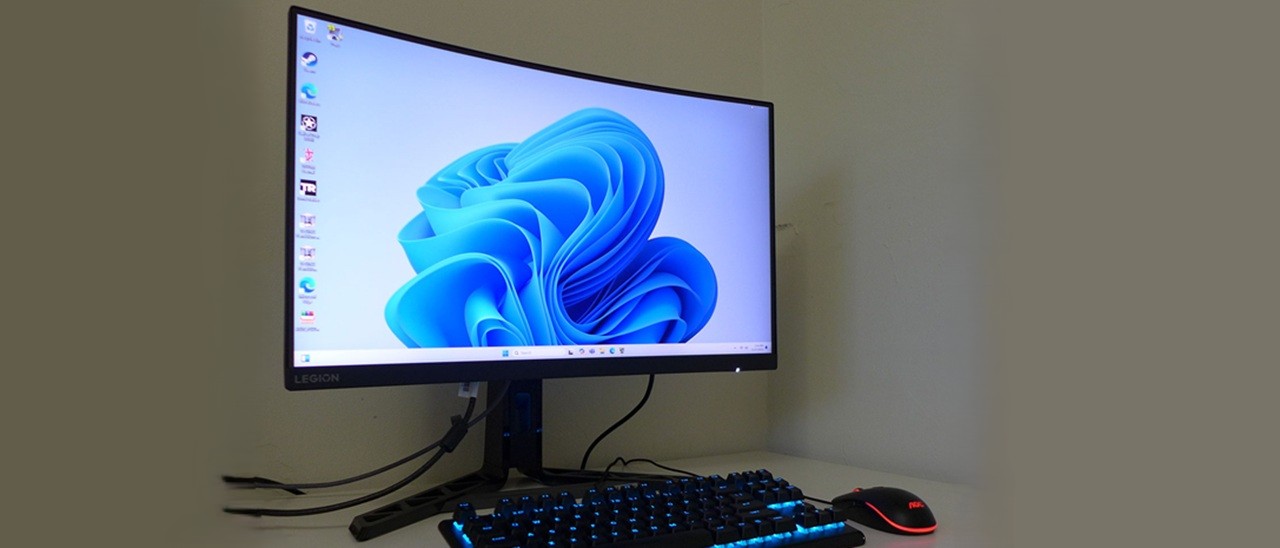Why you can trust Tom's Hardware
The R27fc-30 doesn’t sacrifice color accuracy for cost. It can be used without calibration if you prefer to just set brightness to taste. Stick to the Standard mode for all content. And if you need sRGB, that choice is in the color temp menu.
Grayscale and Gamma Tracking
Our grayscale and gamma tests use Calman calibration software from Portrait Displays. We describe our grayscale and gamma tests in detail here.
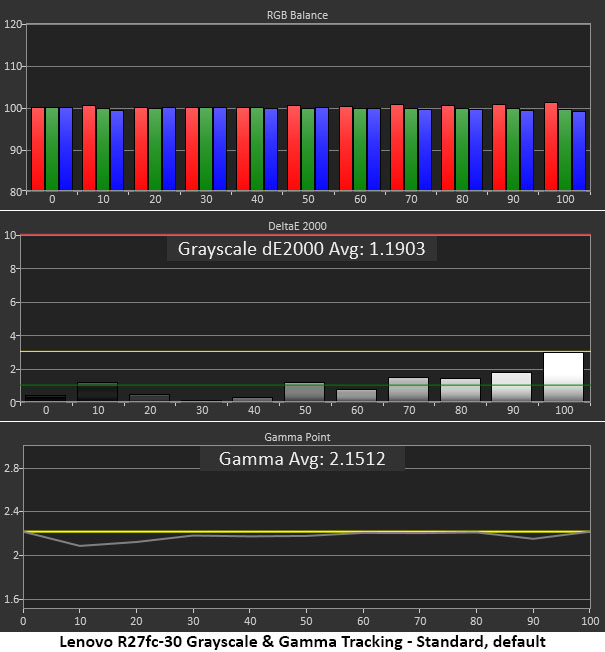
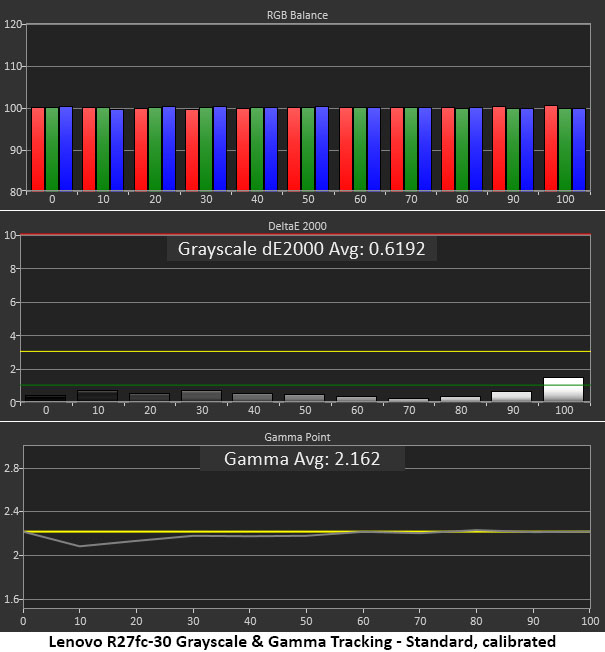
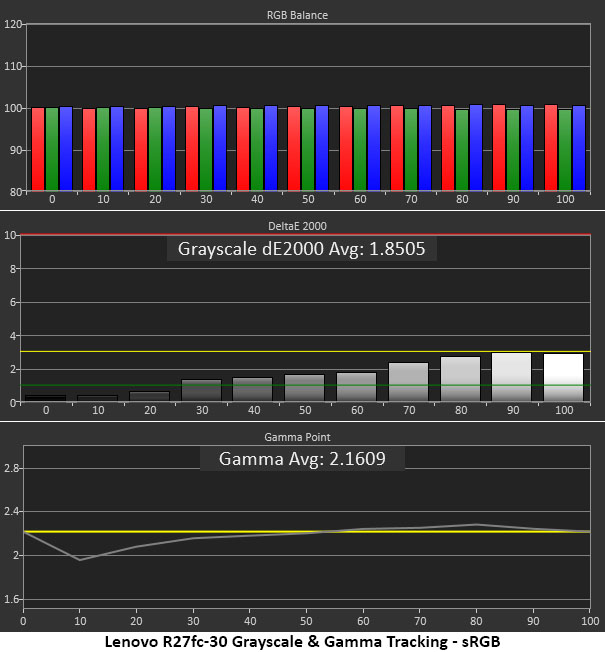
The R27fc-30’s first chart shows no visible grayscale errors. The 100% point comes close to the threshold but doesn’t pass 3dE. And the remaining values are all less than 2dE. Gamma tracks just under the 2.2 line with slight dips (too light) at 10 and 90%. These errors are nearly impossible to see in actual content.
Calibration further reduces grayscale errors and tightens gamma at the 90% point. This gives bright highlights a little more detail. You might see a few light spots in shadow areas but from a gaming standpoint, that just means it’ll be a little easier to see in the dark. These are minor nitpicks at best. This is excellent performance.
sRGB grayscale tracking is also without visible error and the gamma tracks similarly with a dip at 10% brightness. If you’re using the R27fc-30 to color grade, the sRGB option is completely usable.
Comparisons
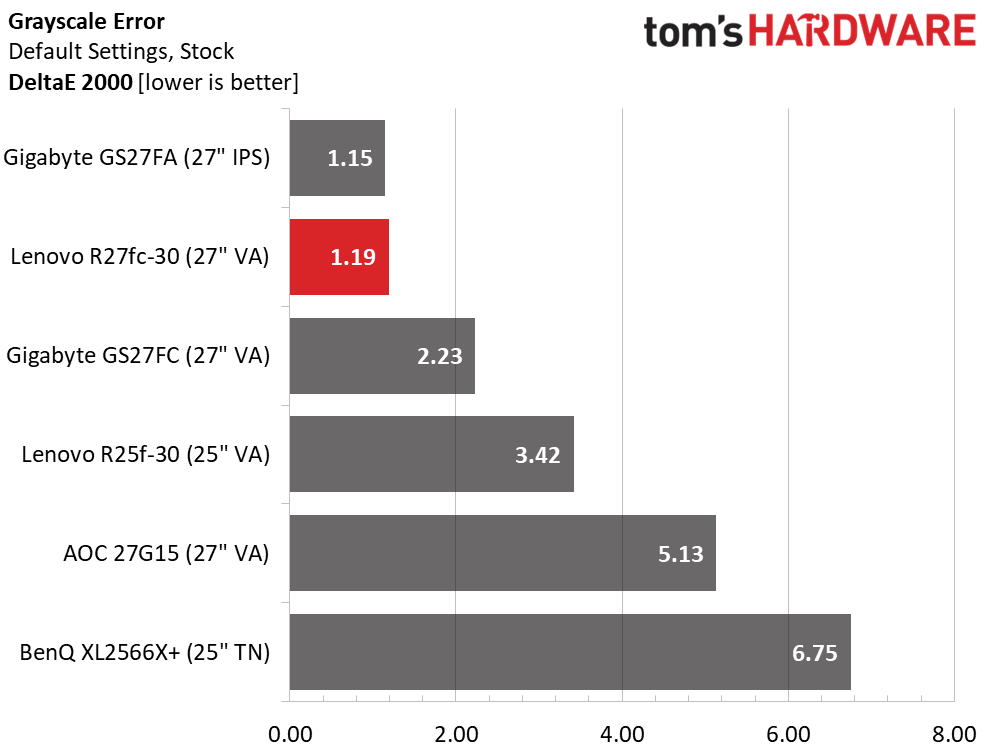
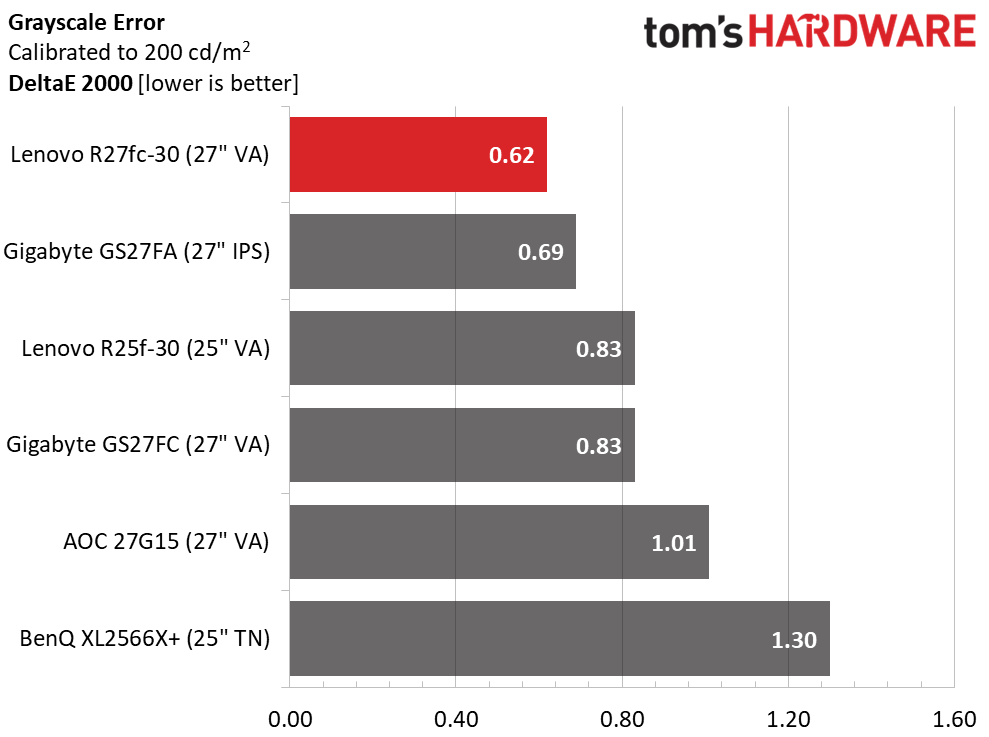
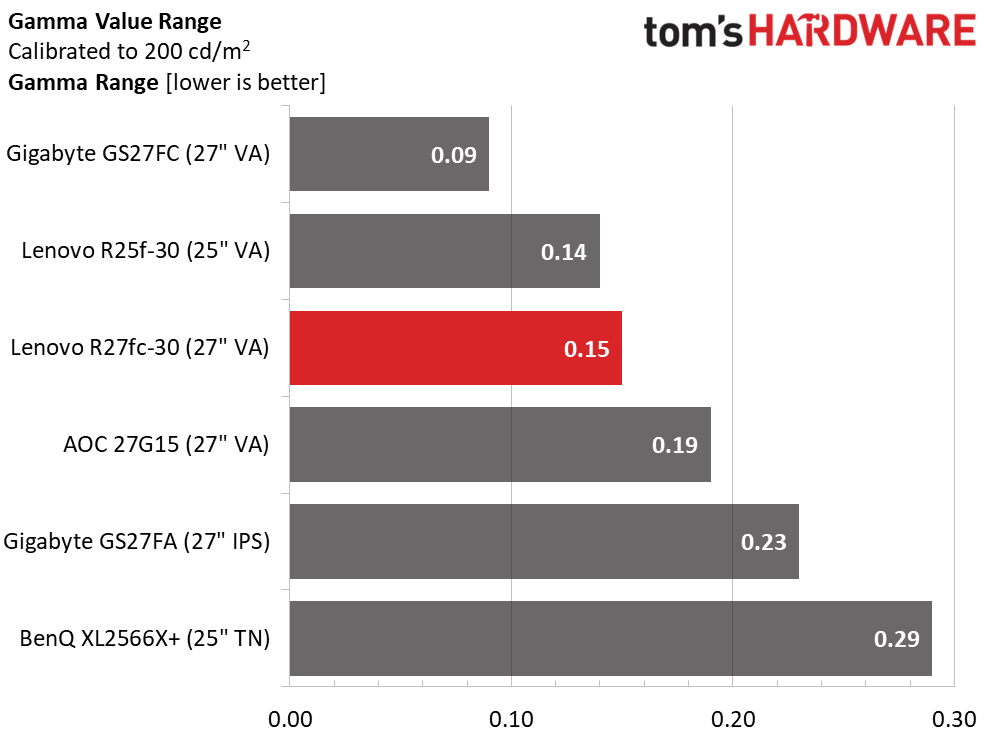
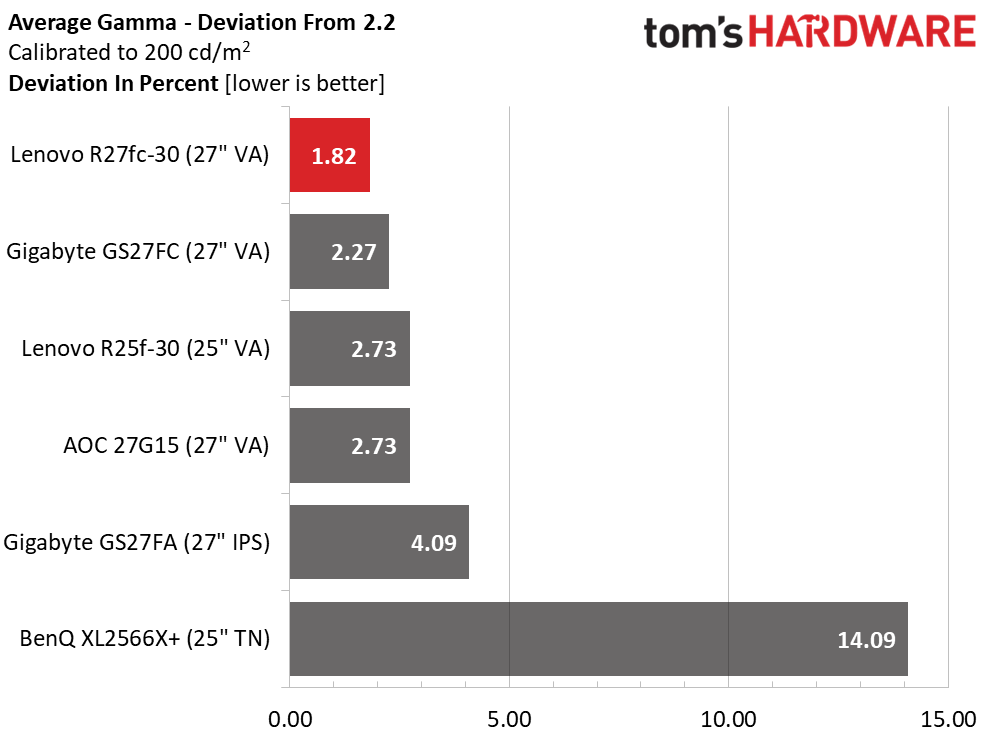
The R27fc-30’s 1.19dE default grayscale error is an excellent result. It’s well below the visible threshold so you can forgo calibration if you wish. A few tweaks of the RGB sliders bring the error lower to 0.62dE, enough to win the day. With calibration, none of the monitors have visible errors, so A/B comparisons are a wash.
The R27fc-30 has very small gamma errors, which contribute to its value range of 0.15. However, it is closer to the 2.2 standard than the others. As I said, these are minor issues that have no significant impact on image quality.
Get Tom's Hardware's best news and in-depth reviews, straight to your inbox.
Color Gamut Accuracy
Our color gamut and volume testing use Portrait Displays’ Calman software. For details on our color gamut testing and volume calculations, click here.
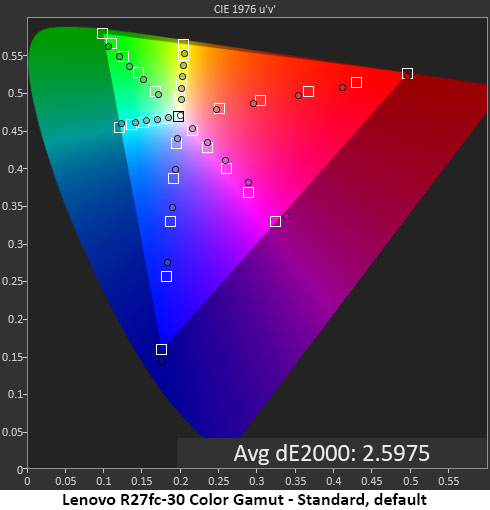
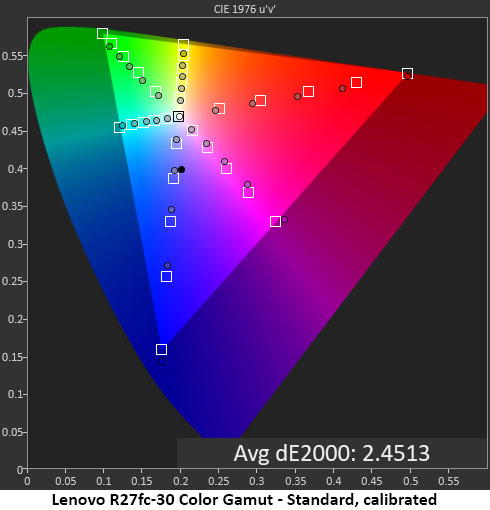
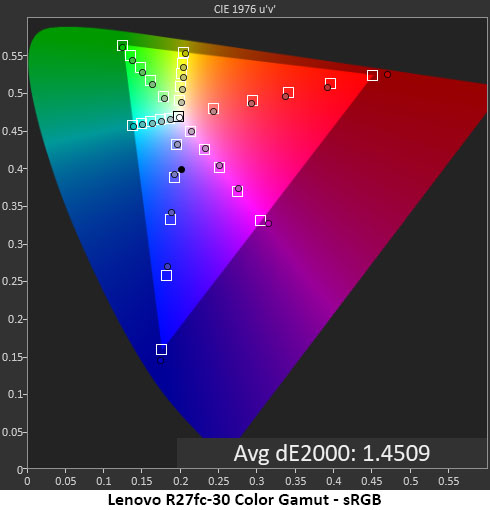
The R27fc-30’s default color chart shows a few small anomalies. Perimeter coverage is good, with plenty of blue and red. Green falls a little short, which is typical of wide-gamut displays at this price point. However, there is slight undersaturation in the mid-tones. This doesn’t have a major impact on the image, but it’s better to be a little overzealous in this test.
sRGB hits its targets with accuracy and only shows a bit of extra red at the 100% point. The R27fc-30 is fine for color grading if you need that ability.
Comparisons
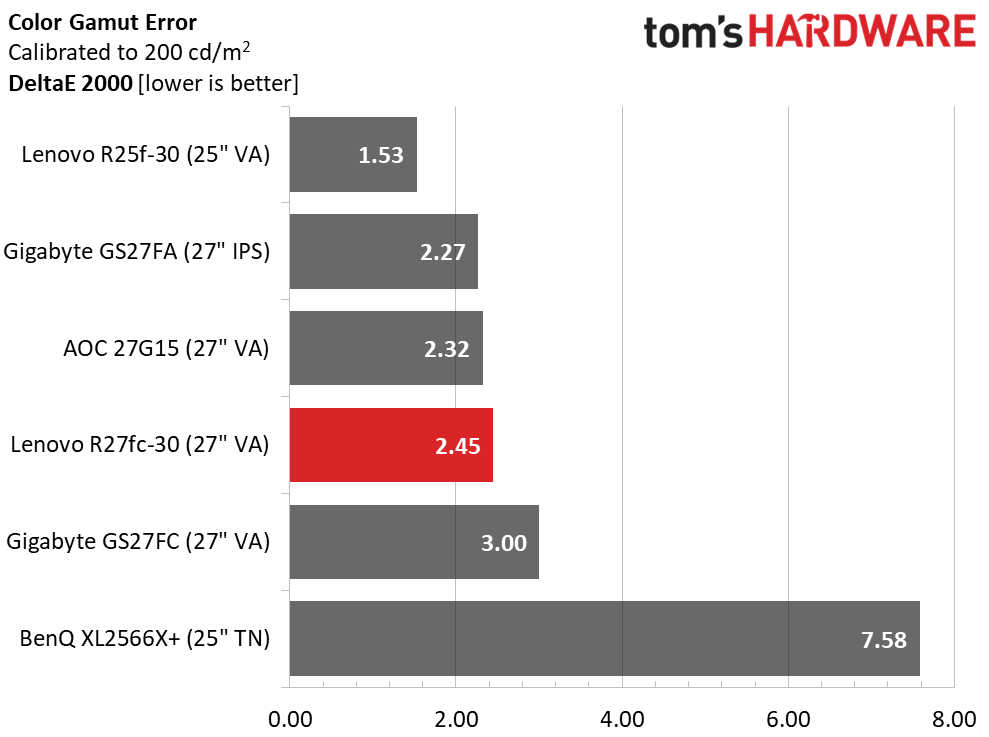

The group is fairly tight in the color error comparison with only the BenQ being an outlier. The R27fc-30 sits in the middle with a largely invisible 2.45dE value. It’s a tad short of 100% green and some inner points are undersaturated. But these are minor issues. The overall color rendition is very pleasing to the eye.
With 85.54% coverage of DCI-P3, the R27fc-30 is about average for its price category. As you can see, it’s right in the middle here. Only a slight green deficiency keeps it from a higher number. For less than $200, you won’t find more color than what you see here. sRGB coverage is at 104.18% due to an oversaturated red primary.
Test Takeaway: The R27fc-30 is very colorful for the money with good coverage of DCI-P3 and a usable sRGB mode. It doesn’t need calibration, which is a plus for sub-$200 monitors, and solid gamma tracking means the picture is vibrant and lively. There is truly nothing to complain about here.
Current page: Grayscale, Gamma and Color
Prev Page Brightness and Contrast Next Page HDR Performance
Christian Eberle is a Contributing Editor for Tom's Hardware US. He's a veteran reviewer of A/V equipment, specializing in monitors. Christian began his obsession with tech when he built his first PC in 1991, a 286 running DOS 3.0 at a blazing 12MHz. In 2006, he undertook training from the Imaging Science Foundation in video calibration and testing and thus started a passion for precise imaging that persists to this day. He is also a professional musician with a degree from the New England Conservatory as a classical bassoonist which he used to good effect as a performer with the West Point Army Band from 1987 to 2013. He enjoys watching movies and listening to high-end audio in his custom-built home theater and can be seen riding trails near his home on a race-ready ICE VTX recumbent trike. Christian enjoys the endless summer in Florida where he lives with his wife and Chihuahua and plays with orchestras around the state.
